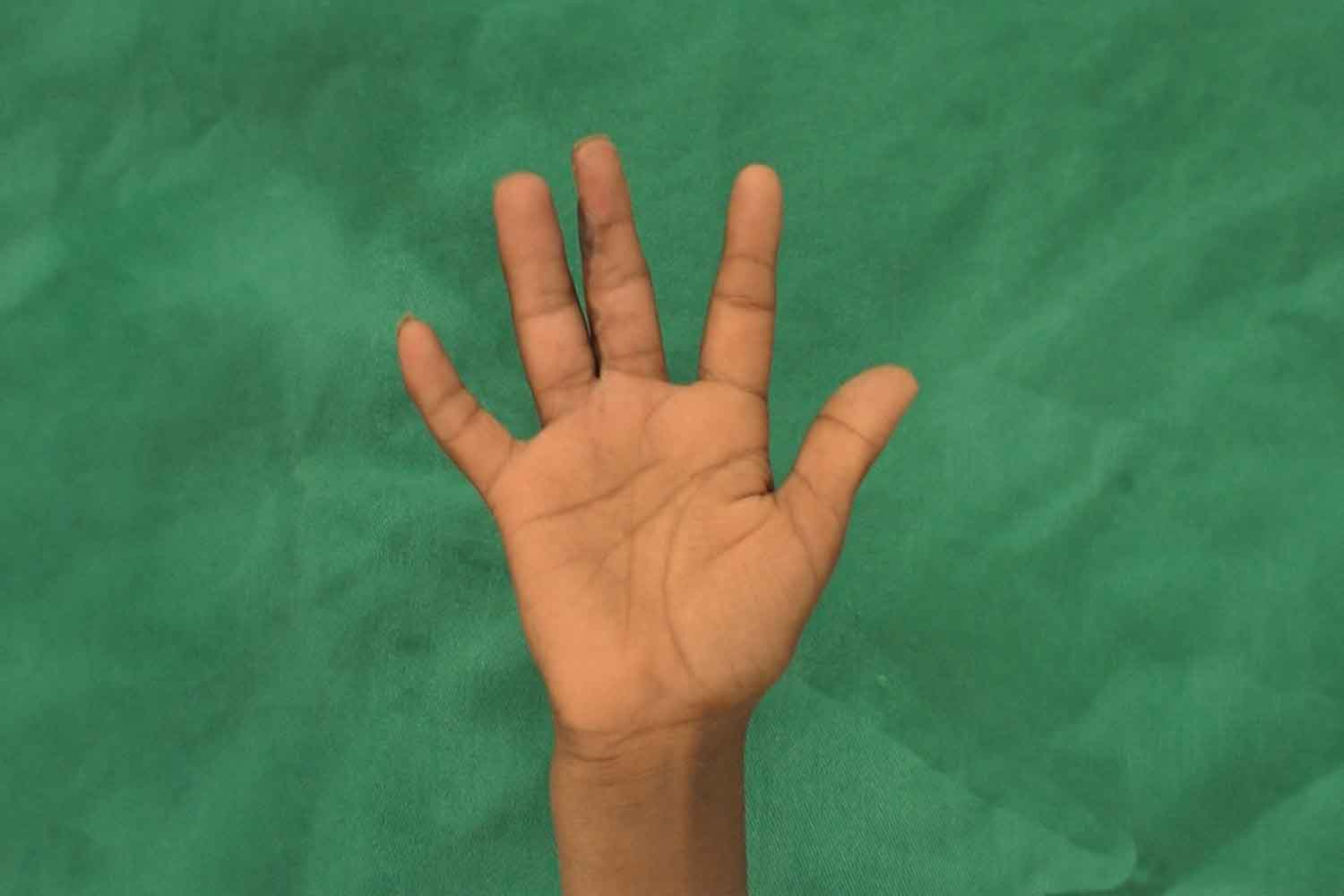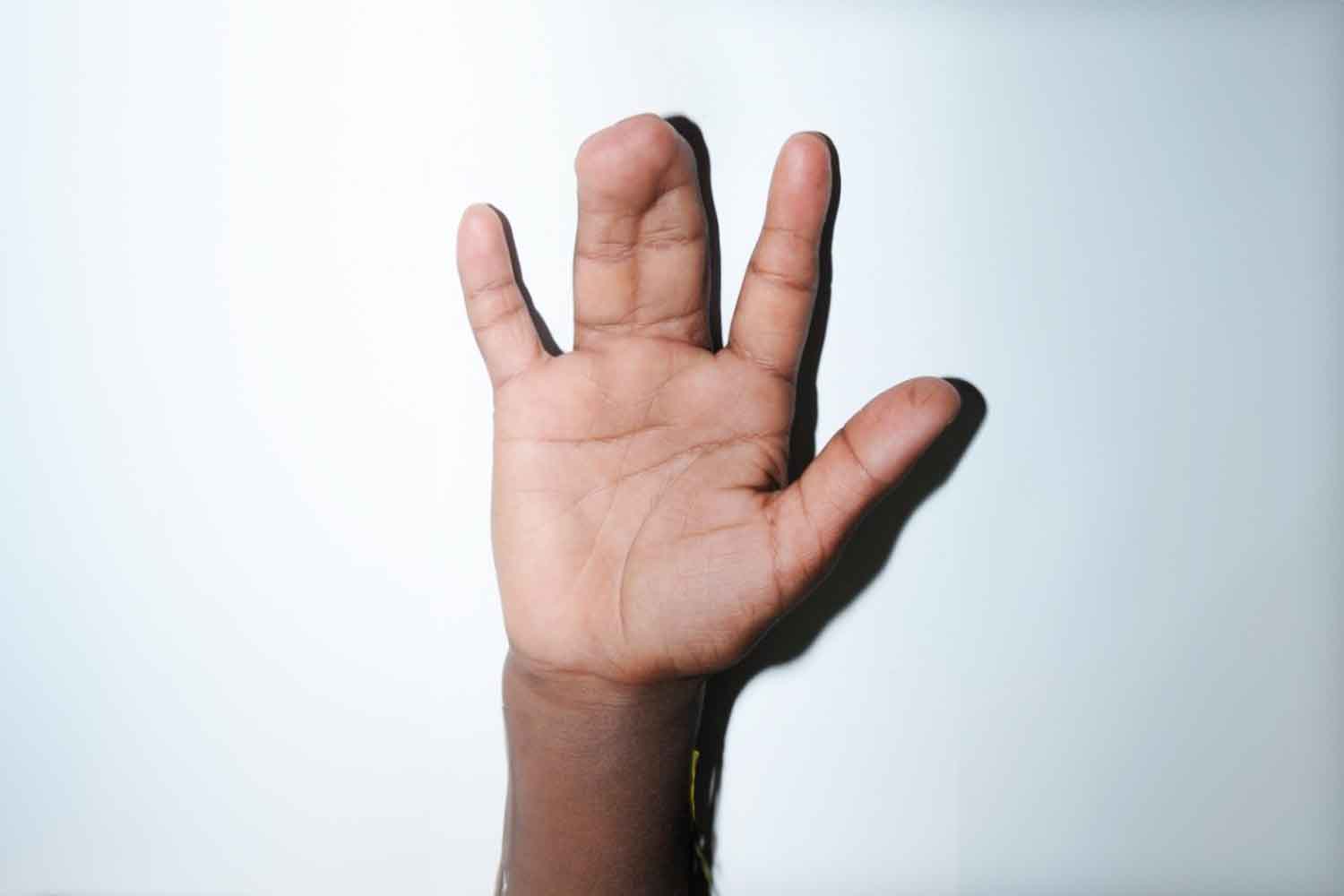Hand Surgery (Birth Deformities)
Syndactyly
Syndactyly, a condition where two or more fingers or toes are fused together, presents a unique challenge, both functionally and aesthetically. For those seeking expert care, Dr. Sushil Nahar offers advanced surgical solutions that not only separate the fused digits but also restore natural movement and appearance. Syndactyly can range from a simple skin connection to a more complex fusion of bones.
Dr. Sushil Nahar’s expertise, patients can expect a personalized treatment plan that addresses their specific needs, whether it's for a child born with the condition or an adult seeking correction later in life. By employing the latest techniques and focusing on minimal scarring, Dr. Nahar ensures that the results are as seamless and natural as possible, allowing patients to enjoy improved hand or foot function along with enhanced aesthetic appeal.
Dr. Sushil Nahar’s expertise, patients can expect a personalized treatment plan that addresses their specific needs, whether it's for a child born with the condition or an adult seeking correction later in life. By employing the latest techniques and focusing on minimal scarring, Dr. Nahar ensures that the results are as seamless and natural as possible, allowing patients to enjoy improved hand or foot function along with enhanced aesthetic appeal.
 After
After  Before
Before Drag
Hand Surgeries (Birth Deformities)
Why syndactyly occurs?
During normal embryonic development (while the baby is still in the womb), the hand initially forms in the shape of a paddle; then—at about the sixth or seventh week of pregnancy—splits into separate fingers. Syndactyly results if there’s an irregularity in this process: The fingers fail to divide normally (failure of differentiation).
Syndactyly can be classified in the following ways:
Syndactyly can be classified in the following ways:
- Incomplete: the webbing or joining doesn’t extend all the way to the fingertips
- Complete: the webbing or joining extends all the way to the fingertips
- Simple: the fingers are joined only by soft tissue
- Complex: the fingers are joined by bone or bony cartilage, as well as soft tissue, in a side-by-side fashion
- Complicated: the fingers are joined by bone or bony cartilage, as well as soft tissue, in a fashion other than side-by-side—such as with abnormally shaped, extra or missing bones
our expert answers
frequently asked questions
When it can be diagnosed?
Syndactyly is visible at birth. It may also be visible in mother’s womb by fetal ultrasound.
How is syndactyly treated?
Syndactyly can be corrected surgically by releasing the fingers from their webbing. This is usually done in children between 1 and 2 years old. At this age, the child is old enough to tolerate anesthesia and surgery and also is not at risk for missing developmental milestones such as grasping (prehension).
What is postoperative protocol?
After surgery, child is usually placed in an above-elbow cast for 3 weeks to help immobilize and protect the hand. Once the cast is removed, a splint that slides in between the fingers and keeps them apart is used for an additional six weeks. During this time, physiotherapy is performed to reduce scarring, stiffness and swelling and improve function.
What is the outcome of syndactyly surgery?
The most of young patients have adequate finger function and an improved appearance of their fingers and hands. It is possible that in a severe case, your child may need additional reconstructive surgery to recover full function and improve the hand’s appearance.
APPOINTMENT
